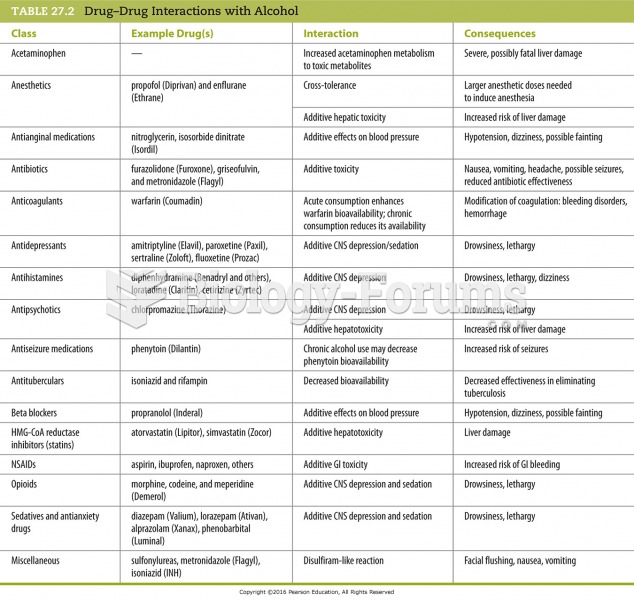Answer to Question 1
Correct Answer: 1,2,3
Rationale 1: Most illicit drugs cross the placenta and can cause premature birth, low birth weight, birth defects, and withdrawal symptoms.
Rationale 2: Certain drugs can cause constriction of placental blood vessels, resulting in decreased nutrient exchange.
Rationale 3: Most illicit drugs cross the placenta and can cause premature birth, low birth weight, birth defects, and withdrawal symptoms.
Rationale 4: The effect the drug has on the fetus will depend on the stage of fetal development. There is a greater potential for harm during the first trimester but nutrients to the fetus can be compromised by drug abuse during the latter stages of pregnancy.
Rationale 5: While withdrawal can cause irritability in infants born to drug addicts, the risk for irritability is not the reason for abstaining from drug use during pregnancy.
Global Rationale: Most illicit drugs cross the placenta and can cause premature birth, low birth weight, birth defects, and withdrawal symptoms. Certain drugs can cause constriction of placental blood vessels, resulting in decreased nutrient exchange. Most illicit drugs cross the placenta and can cause premature birth, low birth weight, birth defects, and withdrawal symptoms. The effect the drug has on the fetus will depend on the stage of fetal development. There is a greater potential for harm during the first trimester but nutrients to the fetus can be compromised by drug abuse during the latter stages of pregnancy. While withdrawal can cause irritability in infants born to drug addicts, the risk for irritability is not the reason for abstaining from drug use during pregnancy.
Answer to Question 2
Correct Answer: 1,2,3
Rationale 1: Many illicit drugs can cause preterm birth.
Rationale 2: Many illicit drugs can cause low birth weight.
Rationale 3: Many illicit drugs can cause birth defects.
Rationale 4: No research suggests that drug use can cause allergies to narcotics.
Rationale 5: No research suggests that drug use can cause increased labor.
Global Rationale: Many illicit drugs can cause preterm birth, low birth weight, and cause birth defects. No research suggests that drug use can cause allergies to narcotics or that drug use can cause increased labor.







